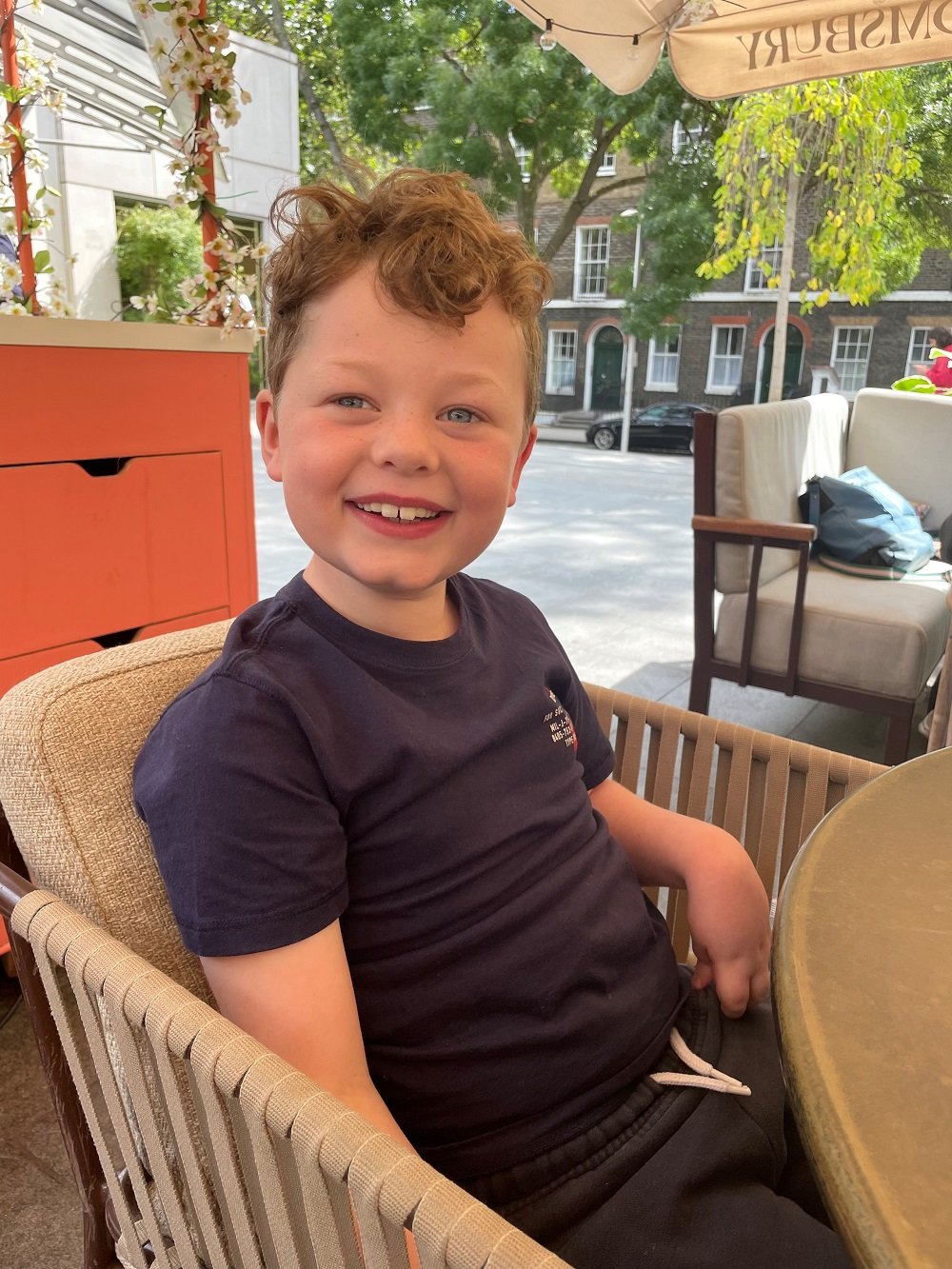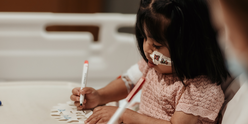Stealth Image Guidance Systems reduce brain surgery risk
6 Sep 2023, 9:04 a.m.
A generous donation from the Kusuma Trust will go towards funding two new Image Guidance Systems. These essential pieces of equipment will help benefit children with epilepsy, like Sam.
Kusuma Trust UK gives grants to causes, organisations and people that are making a positive difference to society.
Unexplained seizures
Sam was just nine months old when he suddenly experienced a huge seizure. He had an MRI scan, and the family was told that he had a very rare neurological condition called Sturge Weber Syndrome.
Sam’s mum Alexandra explains, “Normally the syndrome is associated with a birthmark, but Sam had nothing, which is incredibly rare. There are only a small number of people in the world without a birthmark, so we had absolutely no idea. His seizures were quite severe, but they managed to get them under control, and we went home for a little while.”
Unfortunately the seizures worsened, and Sam was quickly transferred to Great Ormond Street Hospital in the middle of the night.
Sam had an electroencephalogram (EEG) the next day and that’s when they realised just how severe his seizures were.
Undergoing brain surgery
Normally brain surgery takes months to sign-off, but Sam didn’t have months.
“Dr Aylett, the lead Sturge Weber neurologist, came to see us on the ward. She changed everything. Before we knew it, there were meetings happening behind closed doors, and processes for brain surgery were fast-tracked because Sam was so ill.”
Sam had brain surgery just two weeks’ later, where they partially removed the right-side of his brain to stop the seizures.
How Image Guidance Systems aid surgeons
Image-guided surgery is the term used when a surgeon uses tracked surgical instruments in conjunction with pre-operative images to guide the procedure.
During image-guided surgery a high-resolution pre-operative scan (MRI or CT) is uploaded onto a computer system and converted into a three-dimensional model. An infrared camera is then able to track the position of the instruments used during surgery and projects their position onto the three-dimensional model. This allows the surgeon to determine accurately where the instrument is in the brain, reducing the risks during surgery.
“Image Guidance Systems are now essential for brain surgery. We use them routinely to help us find that abnormality within the brain that we want to remove. This could be a brain tumour, a malformation of the blood vessels of the brain, or an abnormal part of the brain that is causing epilepsy.” Said Dr Kristian Aquilina, a Consultant Paediatric Neurosurgeon at GOSH.
Using these systems, surgeons can locate these abnormalities accurately without disturbing any other part of the brain. They can then plan the safest trajectory to them.
Sam is now loving life
Sam is now seven years old and doing really well. He is in mainstream school, and he loves drama and dancing.
“He’s the biggest character you will ever meet and I’m sure he’s going to be on stage one day. He’s very confident and not self-conscious at all about his illness, in fact he thinks it makes him special, which is great.”

Sam is smiling as he enjoys an outing to a restaurant.
When you have brain surgery, over time the parts of the body you can’t move start to stiffen up and it becomes harder to use them – this is called spasticity. Sam has very slight movement in his left arm, but it is now also tightening up, and because it is not straight it’s become harder to use. In August 2023 he will be coming into GOSH to have surgery on his left arm to loosen it up.
“He’s incredibly proud of everything he has been involved with for GOSH Charity. He showed his class the social media posts that he featured in, and I think it really helped him to explain his condition to his friends."






